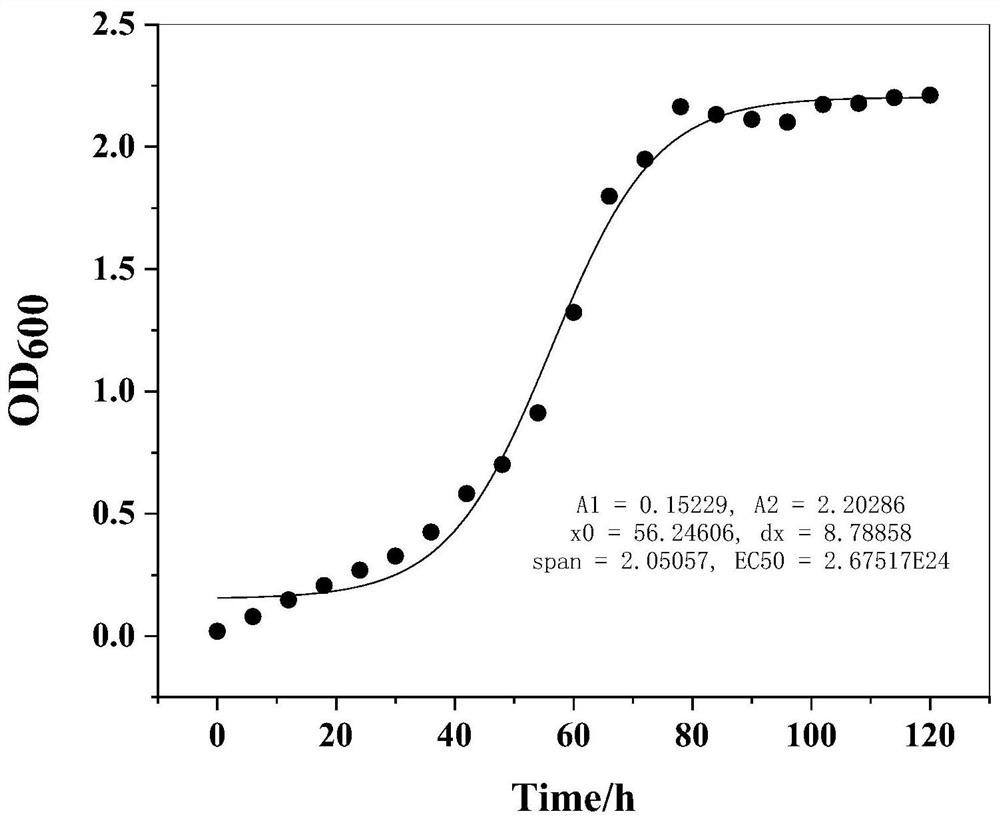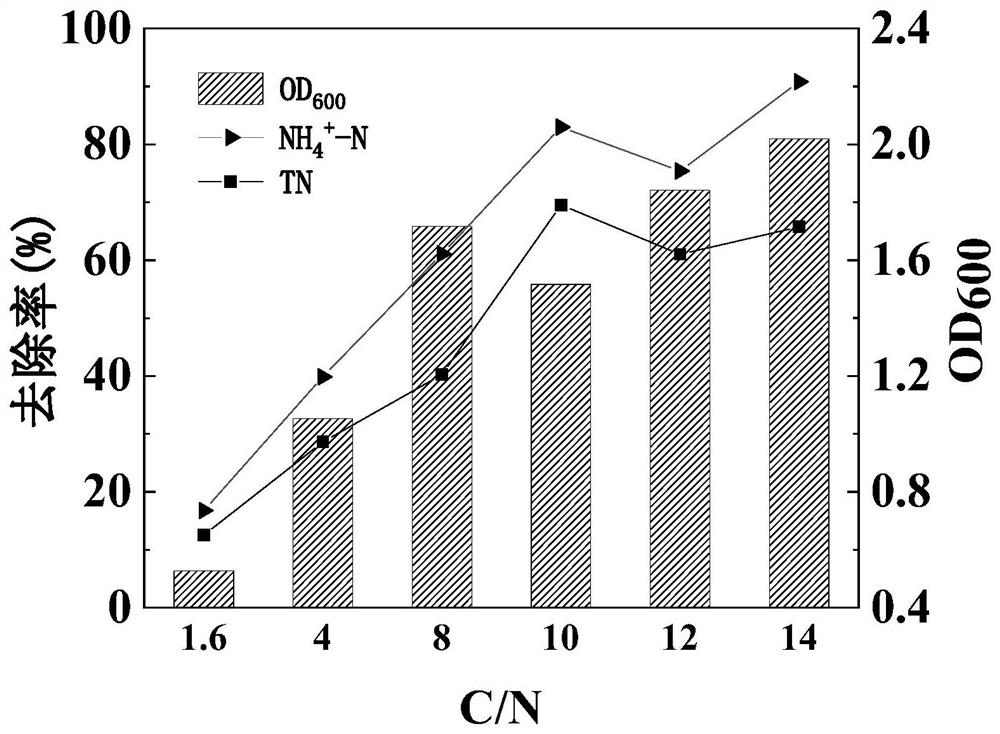Heterotrophic nitrification-aerobic denitrification bacterium resistant to low carbon and high nitrogen and application thereof
A technology of aerobic denitrifying bacteria and heterotrophic nitrification, applied in the field of environmental microorganisms, can solve the problems of increased cost and high ammonia nitrogen tolerance concentration, and achieve the effects of widespread promotion, fast growth of bacteria and high removal rate
- Summary
- Abstract
- Description
- Claims
- Application Information
AI Technical Summary
Problems solved by technology
Method used
Image
Examples
Embodiment 1
[0026] Embodiment 1, strain enrichment and optimization
[0027] 1) Enrichment culture: Take 2ml of biogas slurry water sample from Chongqing Muan pig farm in Banan District, Chongqing, inoculate it into a 250ml Erlenmeyer flask containing 100ml of LB medium, and put it into a shaker set at 30°C and 160r / min. After culturing for 72 hours, inoculate at 2% into a 250ml Erlenmeyer flask also equipped with 100ml LB medium, and subculture twice to obtain the enriched bacterial solution.
[0028] 2) Subculture and domestication: Take 2ml of the enriched bacteria liquid, inoculate it into a 250ml Erlenmeyer flask containing 100ml of heterotrophic nitrification, aerobic and denitrification selective medium, put it into a shaker set at 30°C, 160r / min, and test every 24h OD in culture flask 600 , NH 4 + -N, TN, subcultured three times to obtain a mixed flora with stable denitrification effect.
[0029] 3) Isolation of pure bacteria: use cooled sterile distilled water to carry out 10...
Embodiment 2
[0031] Embodiment 2, strain identification
[0032] Sichuan Qingke Company was entrusted to complete the 16SrDNA sequencing of the screened strains. After sequencing, the 16S rDNA sequence of the strain was obtained. According to the result, Blast comparison and identification was carried out in NCBI, and the strain with similar homology to the target gene sequence was selected, and the phylogenetic tree was constructed by Neighbor-Joining method with MEGA 7.0 software.
[0033] The identification results showed that the bacteria belonged to Gram-negative bacteria, the colony diameter was 2-4mm, aerobic, the surface was moist, shiny and opaque. The sequencing of the 16S rDNA of Shinella sp.CY-9 is shown in SEQ ID NO.1, and the base sequence was compared with the GenBank nucleic acid sequence database and found to be the same as that of Shinella sp. strains W G48, ADC-10, The homology of C72 is 100%, and the phylogenetic tree of Shinella sp.CY-9 can be seen figure 2 .
Embodiment 3
[0034] Example 3. Degradation effect of Shinella sp.CY-9 on ammonia nitrogen and TN under different C / N conditions
[0035] Prepare heterotrophic nitrification, aerobic and denitrification selection medium with C / N between 1-15 respectively, in triplicate, and sterilize the above culture at 121°C, and inoculate 2ml Shen Bacteria Shinella sp.CY-9 bacteria liquid, cover the rubber stopper and shake well, put it into the shaker and set it at 30°C, 160 rpm to cultivate, and measure the concentration of the bacteria liquid every 24h (OD 600 ), ammonia nitrogen (NH 4 + -N), total nitrogen (TN) concentration. The detection method of ammonia nitrogen is Nessler's reagent spectrophotometry, and the cuvette and wavelength are 20mm glass cuvette and 420nm respectively. The reagents used in the detection process were Nessler's reagent and potassium sodium tartrate. The detection method of total nitrogen is the alkaline potassium persulfate spectrophotometer method, the cuvette and opt...
PUM
 Login to View More
Login to View More Abstract
Description
Claims
Application Information
 Login to View More
Login to View More - R&D
- Intellectual Property
- Life Sciences
- Materials
- Tech Scout
- Unparalleled Data Quality
- Higher Quality Content
- 60% Fewer Hallucinations
Browse by: Latest US Patents, China's latest patents, Technical Efficacy Thesaurus, Application Domain, Technology Topic, Popular Technical Reports.
© 2025 PatSnap. All rights reserved.Legal|Privacy policy|Modern Slavery Act Transparency Statement|Sitemap|About US| Contact US: help@patsnap.com



